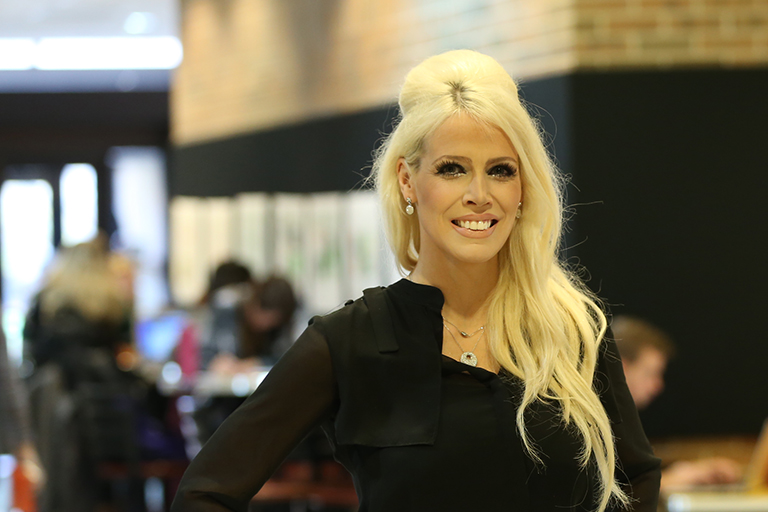Assistant Professor Wietske Van Osch of the MSU Department of Media and Information received a five-year, $526,000 Early CAREER Award from the National Science Foundation to analyze and encourage creative collaborations within an organization's social media system.
The basic aim of "Generating Generativity: Modeling and Fostering Creative Collaborations in Enterprise Social Media Using a Cyberinfrastructure for Smart Innovation," Van Osch said, is to identify the elements that foster creative teams by leveraging the power of Enterprise Social Media—or ESM.
"Organizations and organizational scholars have been grappling for decades with the question of what makes teams creative," Van Osch said. "But in recent years, two challenges have prevented researchers from generating actionable solutions to this question."
First, researchers are challenged by conflicting theories of what underpins group creativity. One group argues that increased transparency leads to increased diversity—which in turn results in enhanced creativity. Another group of researchers argues that privacy leads to increased cohesion and equality in a team, which improves creative output.
Researchers have also been dependent on self-reporting, relying on what teams say they do or on small-scale observations of what teams actually do. That, Van Osch said, limits the ability of researchers to study the actual behaviors or activities of a large number of teams.
Van Osch believes that internal social media platforms provide a unique opportunity for businesses and organizations to overcome these two challenges, and is developing a feedback system to help. Enterprise Social Media systems are similar to Facebook-like platforms with one main difference: the platform is only accessible to employees inside a particular company or organization. Employees can use their ESM to send private messages, make important announcements, or to form small teams or communities to engage in projects, knowledge sharing or creative collaborations.
"ESMs generate digital traces of actual interactions, behaviors and team conversations on a large scale," said Van Osch. "That information allows researchers to study what teams actually discuss and do, as opposed to what they say they do."
Having access to actual conversations and interactions through ESMs allows researchers to overcome the pitfalls of self-reported data. The direct access also enables researchers to build algorithms that yield more automated analyses so that a larger number of teams can be studied simultaneously.
Van Osch describes an ESM system as a unique "laboratory setting" where teams can decide if they want particular conversations or interactions open to any contributor. Companies can also apply settings or create groups within an ESM that make particular conversations or activities private or selective—thereby limiting participation.
"As a result, ESMs offer a unique context in which we can solve the puzzle over whether transparency is good or bad for creativity," Van Osch said. "Our preliminary findings show that not all creative dialogs are identical. More transparent groups generated more diverse or external perspectives. Conversely, creative dialogues that challenged the status quo or reframed ideas emerged within closed groups, fostered by a cohesive environment that built trust and equality."
Van Osch's upcoming NSF project will argue that teams become aware of the discrepancies between their intended creative behaviors and actual interactions when they know what characteristics drive particular dialogue. In turn, those teams can be empowered through technology design to steer behaviors in more productive directions.
Ultimately, Van Osch said the study will result in building a persuasive feedback system—or a "Cyberinfrastructure for Smart Innovation (CSI)"—that can be applied in other contexts or studies. In particular, she looks to translate lessons learned about teams in organizations to classroom settings to improve team-based class projects, as well as to explore factors that drive successful classroom collaborations.
"We believe a CSI system could be a tool that organizations can adopt to establish more creative teams," said Van Osch. "Our hopes are that this research can provide a critical reflection into the physical design and digital restructuring of today’s organizations with the aim of improving creativity. "
Van Osch's NSF Early CAREER Award will build on the ongoing collaboration and research with Steelcase that began when Van Osch joined the MSU faculty in 2012. The award is considered among the most prestigious granted by the NSF to support early-career faculty who have the potential to serve as academic role models in research and education, and to lead advances in the mission of their department or organization.
By Ann Kammerer
